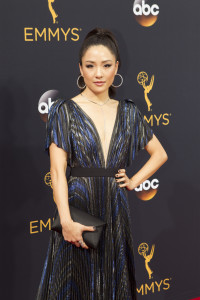
Connie Lee’s fingers knot and unknot themselves, worn and roughened, yet still elegant. Lee, like many of her peers, doesn’t know where she wants to go, both in her art and her life, yet she keeps moving forward.
Many students question what they want to do and where they want to go in life. As a junior preparing for her senior year, Lee’s ambiguity about her future as an artist is not unusual.
“I think knowing what direction to go in for artists is much less clear than it used to be so with the given unknown there’s an inclination to feel confused and desperate,” senior studio art major Selena Matranga said in an email about Connie. “But I think artists always ask themselves ‘what’s the point’ and art is answering that question.”
Lee transferred to Mills in the Spring of 2014 and has been primarily working with wood, ceramics, sculpture and video as mixed media since.
“I’m still trying to find how my art fits into the larger discussion because it’s missing something conceptually,” Lee said.

This semester, Lee is putting sculpting to the side and exploring photography and book art. She can’t ignore drawing — her first and favorite medium she worked with. For many years she considered the illustration or animation industries as a place she could preserve the intersection of what she loves and what is practical and pays the bills.
“I feel like I will go back to school for illustration and animation,” Lee said. “I’ve no idea.”
Her photography teacher, Jennifer Brandon, believes that not knowing what direction to go in is a good thing.
“It’s actually having that question that propels the work. The exciting thing about being a student in the arts is that you get to try things on, explore many mediums and many ideas, make mistakes and hit dead ends and try again,” Brandon said. “Through this process, they find the work.”
Lee says she was hesitant to become an artist, especially because her parents worried about her job security. After a year at UC Davis, Lee knew she couldn’t stay away from art, even though she often finds herself more interested in what her peers are doing artistically.
“When I talk about artists, I still don’t necessarily think I’m one of them,” Lee said.

However, she is still constantly pushing forward, both in her life and in her art, and has a drive that Chris Sollars, assistant professor of studio art, marvels at. She has the patience to go through many prototypes, many restarts to get to what she is looking for.
“I’d feel like it was a good piece already and Connie wasn’t satisfied,” Sollars said. “She’s already at a point where she could be critical of her forms.”
Lee has combined performance and art, inviting and involving the viewer in certain ways. Whether it is having people kiss through clay, or giving them viewfinders with the mirrors angled at the sky, there’s always an interactive aspect in her work.
“The viewer is put in a situation where they have to feel an emotion,” Matranga said. “She’s playing with people’s personal barriers.”
Sollars finds that Lee is very aware of the viewer’s experience and how her pieces would function in the world. Her current focus is on play and tension. She likes conflicting situations or contrasting images that use humor, but cause discomfort such as a portrait of her dad on the toilet flipping the viewer off.
“It’s a balance between something adorable and something unpleasant,” Lee said.
Lee admires The Gu Tai group who perform simple and concise but grand gestures of art. That speaks to both parts of her exploration, play and tension.
This aspect of discovery in her pieces is what makes Matranga feel so excited and playful when she encounters Lee’s work.
“There’s that element of unfinished-ness,” Matranga said. “That’s part of why it’s so intriguing. She doesn’t play into that formal quality.”

Although she feels that her future is slightly uncertain, Lee knows that she is interested in illustration or studio art and fine arts.
“Connie is testing out the waters. She is so cross disciplinary because there are so many options in terms of practice and I think she’s building all these skills to expose her ideas to every possible format and looking for what feels right,” Matranga said. “She knows herself. She knows she loves to draw and she is really skilled at it but she will take every other class as well.”
That love is something that both Sollars and Matranga noticed about Lee. She loves seeing how people work with her art, playful and mischievous at the same time. Matranga calls it “dark humor” and “comforting nervous laughter.” Sollars calls it Lee’s “physical giggle” with her shoulders. Either way, she enjoys what she does and keeps moving forward.
“She keeps exploring,” Sollars said.


